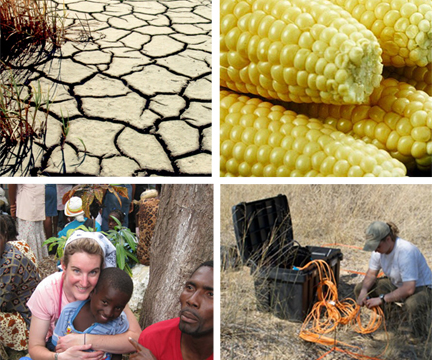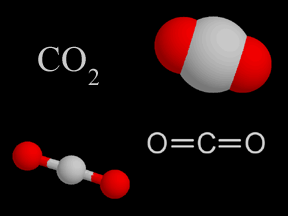Click on image for full size
Starting at the top left and moving clockwise, permissions were granted from USGS, USDA, Dr. Caylor of Princeton University and Bridget Holtz.
Related links:
Changing Planet: Withering Plants – Stressing Over Lost Water (A Classroom Activity)
Changing Planet Navigation Page
Effects of Climate Change Today
Earth’s Climate and Global Change
Heat Waves, Storms and Drought - Extreme Events and Human Health
The Red Cross - An Aid Agency that Serves People around the World
Withering Crops - An Effect of Global Warming
Plants are very important to people. They give us food like corn, potatoes, lettuce, bananas and strawberries. Plants give us material like cotton for clothes. Trees give us paper and wood for building houses. When big changes happen to the plants around us, we are affected too.
Big changes are happening on our Earth. The Earth's climate is is warming. This rise in temperature means some parts of the world will get less rain and so the soil will be drier. Warmer temperatures and a lack of water will cause many plants to wither or die.
This becomes a big problem when the plants are crops, plants grown for food. If crops wither or die, then people will not have enough to eat. This can cause famine or even fighting because people don’t have what they need to survive.
Luckily, people around the world and scientists are helping with crop withering problems that could cause difficulties around the world. Scientists are looking to find ways that crops can grow without needing as much water or fertilizer. Researchers are also working on ways to tell if a drought is coming and they can work with aid agencies to send food to people in need.















